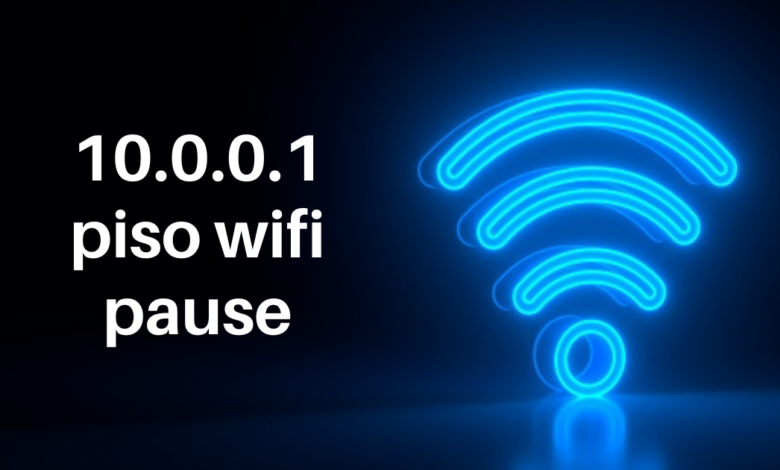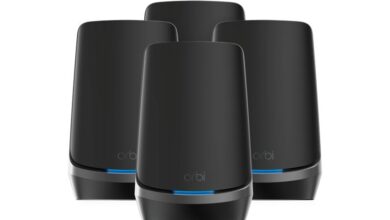10.0.0.1 Piso WiFi Pause: How to Control Network Access Time

Have you ever experienced issues with slow internet speeds or unreliable network connectivity due to heavy network usage? Are you concerned about security risks or unauthorized access to your home or business network? If so, you’re not alone. Managing network usage and improving network security are common concerns for many people, and fortunately, the 10.0.0.1 Piso WiFi pause feature offers a practical solution.
With the 10.0.0.1 Piso WiFi pause feature, you can selectively pause network access for certain users or devices, helping you to control network usage and improve security. In this comprehensive guide, we’ll explore everything you need to know about the 10.0.0.1 Piso WiFi pause feature, including how to access it, how to use it to control network access time, and more.
What is 10.0.0.1 Piso WiFi?
10.0.0.1 Piso WiFi is a public WiFi service that allows users to access the internet using an access code that can be purchased for a small fee. The access code is usually printed on a ticket or a receipt, which can be purchased from a Piso WiFi vending machine or a retailer.
10.0.0.1 Piso WiFi uses a wireless router that is connected to the internet. The router broadcasts a WiFi signal that users within its range can access. Once a user has purchased an access code, they can connect to the 10.0.0.1 Piso WiFi network using their device and the access code.
Also Read: Dommelin Hoeslaken Katoen Rood 150 x 200 cm
10.0.0.1 Piso WiFi pause

As a Piso WiFi network operator, you should be able to pause network access for certain users or during certain times. This can be useful for various reasons, such as network maintenance, security concerns, or to enforce access time limits. One way to achieve this is by utilizing the 10.0.0.1 Piso WiFi pause feature.
To use the 10.0.0.1 Piso WiFi pause feature, you must access the router’s settings page using a web browser. Once logged in, you can navigate to the appropriate section of the settings page and enable the pause feature. From there, you can choose which users or devices to pause and for how long.
One potential benefit of the 10.0.0.1 Piso WiFi pause feature is that it can help you better manage network usage and reduce the risk of unauthorized access. By selectively pausing network access for certain users or devices, you can ensure that your network is used responsibly and securely. Additionally, you can use the pause feature to enforce access time limits and prevent users from exceeding their allotted time on the network.
However, it is important to use the pause feature responsibly and fairly. Users should be notified before any planned network maintenance or scheduled pauses, and access time limits should be clearly communicated and enforced consistently. By using the 10.0.0.1 Piso WiFi pause feature responsibly and effectively, you can help ensure the success and profitability of your Piso WiFi network.
What is the 10.0.0.1 Piso WiFi pause time feature?
The pause time feature is a popular feature on 10.0.0.1 Piso WiFi pause that allows users to temporarily suspend their internet access without purchasing a new access code. The pause time feature is useful for users who need to step away from their devices or take a break from the internet.
To use the pause time feature on 10.0.0.1 Piso WiFi, follow these steps:
- Connect to the 10.0.0.1 Piso WiFi network using your access code.
- Open your web browser and navigate to the pause time website, usually at http://10.0.0.1 or http://192.168.1.1.
- Enter the access code and select the pause time duration. Depending on the operator’s settings, the duration can range from 5 minutes to 12 hours.
- Click on the “Pause” button to suspend your internet access.
- To resume your internet access, navigate to the pause time website and click the “Resume” button.
It’s important to note that the pause time feature is not available on all Piso WiFi networks and may vary depending on the operator’s settings. Additionally, some operators may charge an additional fee for using the pause time feature.
How Piso WiFi Works
Piso WiFi networks provide access codes through vending machines, which can be purchased using coins or bills. These access codes can then be used to connect to the WiFi network. The network operator sets the access code’s cost, which can vary depending on factors such as location and network speed. The network operator can also set time limits for access codes, which can be used to manage network usage and prevent overloading.
Setting up a Piso WiFi network requires routers, control panels, and vending machines. The vending machines distribute access codes and can be installed in various locations such as malls, parks, and public transportation terminals. The control panel manages the network and can be accessed through a web interface. The costs associated with setting up and maintaining a Piso WiFi network can vary depending on hardware and software expenses, maintenance, and marketing expenses.
How to set up 10.0.0.1 Piso WiFi
Setting up 10.0.0.1 Piso WiFi is relatively straightforward. Here’s a step-by-step guide on how to set up 10.0.0.1 Piso WiFi:
- Purchase a wireless router that is compatible with 10.0.0.1 Piso WiFi. You can purchase a router from a local electronics store or online.
- Connect the router to your internet modem using an Ethernet cable.
- Connect your device to the router using WiFi or Ethernet cable.
- Access the router’s settings page by typing the router’s IP address in your web
- browser. The router’s IP address is usually printed on the router itself or can be found in the manual. 5. Log in to the router’s settings page using the default username and password. The default username and password can also be found in the manual.
- Once you’re logged in, navigate to the WiFi settings page and configure the SSID and password for your Piso WiFi network.
- Save your settings, and your Piso WiFi network should be running.
It’s important to ensure your Piso WiFi network is secure by changing the default username and password and enabling encryption. This will prevent unauthorized access to your network and protect your users’ personal information.
Advantages of 10.0.0.1 Piso WiFi

There are several advantages to using 10.0.0.1 Piso WiFi, including:
Cost-effective: Piso WiFi networks are affordable and offer users a convenient and cost-effective way to access the internet.
Accessibility: Piso WiFi networks are available in public places such as parks, cafes, and malls, making them accessible to anyone who needs internet access.
Convenience: Users can purchase access codes from vending machines or retailers, making accessing the internet on the go easy.
Pause time feature: The pause time feature on 10.0.0.1 Piso WiFi is a useful feature that allows users to temporarily suspend their internet access without purchasing a new access code.
Customizable: Piso WiFi networks can be customized to suit the needs of the operator and the users, including the SSID, password, and pause time settings.
The Importance of Network Security
Securing a public WiFi network is critical to preventing cyberattacks and protecting user data. Unsecured public WiFi networks can leave users vulnerable to identity theft, data breaches, and other cyber threats. Piso WiFi networks can be secured using various methods, such as strong passwords and encryption. The network operator can also monitor the network for suspicious activity and take appropriate action to mitigate the risks.
Customization Options for Piso WiFi Networks
Piso WiFi networks offer various customization options to help network operators differentiate themselves from competitors and improve user experience. One of the most popular options is branding, which can be used to promote the network operator’s business or organization. Another option is pricing, which can be adjusted depending on network speed and location factors. Access time limits can also be set to prevent overloading and ensure fair usage of the network.
Tips for Successful Implementation of Piso WiFi Networks
Successful implementation of a Piso WiFi network requires careful planning and execution. Some tips for successful implementation include selecting the right location, setting appropriate pricing strategies, and using effective marketing tactics. Network operators should also be prepared to address common challenges such as hardware failure, network downtime, and user complaints.
Gramhir offers a comprehensive and user-friendly platform for managing your Instagram presence. With its advanced features for analytics, scheduling, and growth tracking, it empowers businesses and influencers to maximize their performance on the platform. By utilizing Gramhir, you can ensure that your Instagram strategy is well-informed, organized, and optimized for success.
Conclusion
10.0.0.1 Piso WiFi is a popular public WiFi service in the Philippines that offers users cost-effective and convenient internet access. The pause time feature is useful for users to temporarily suspend their internet access without purchasing a new access code. Setting up a Piso WiFi network is easy, and the network can be customized to suit the needs of the operator and the users. Overall, 10.0.0.1 Piso WiFi is a reliable and efficient way to provide internet access to the public.
FAQs about 10.0.0.1 piso WiFi pause
How do I access the 10.0.0.1 Piso WiFi pause feature?
To access the 10.0.0.1 Piso WiFi pause feature, log in to your router’s settings page using a web browser. From there, you can navigate to the appropriate section of the settings page and enable the pause feature.
Can I use the 10.0.0.1 Piso WiFi pause feature to pause network access for certain users or devices?
Yes, the 10.0.0.1 Piso WiFi pause feature allows you to pause network access for certain users or devices selectively. This can be useful for enforcing access time limits, addressing security concerns, or managing network usage.
Can I set a specific duration for the pause feature?
You can choose how long to pause network access for certain users or devices using the 10.0.0.1 Piso WiFi pause feature. Depending on your needs and preferences, this can range from a few minutes to several hours.
How does the 10.0.0.1 Piso WiFi pause feature help improve network security?
By selectively pausing network access for certain users or devices, you can reduce the risk of unauthorized access and improve overall network security. This can be particularly useful during increased security threats or addressing specific security concerns.
How do Piso WiFi networks make money?
Piso WiFi networks make money by selling access codes through vending machines. The network operator sets the cost of the access codes, and the revenue generated from the sales is used to cover expenses such as hardware and maintenance costs.
Can Piso WiFi networks be hacked?
Like any other network, Piso WiFi networks can be vulnerable to cyberattacks if proper security measures are not in place. However, the network can be made more secure by implementing strong passwords and encryption, monitoring the network for suspicious activity, and taking appropriate action to mitigate any risks.
What common challenges are associated with setting up a Piso WiFi network?
Some common challenges include hardware failure, network downtime, and user complaints. However, these challenges can be addressed and minimized by carefully selecting the right location, setting appropriate pricing strategies, and using effective marketing tactics.
What are some benefits of customizing a Piso WiFi network?
Customizing a Piso WiFi network can help network operators differentiate themselves from competitors and improve user experience. Options such as branding, pricing, and access time limits can be used to tailor the network to the needs and preferences of the target audience.
What are some tips for successfully implementing a Piso WiFi network?
Some tips include selecting the right location, setting appropriate pricing strategies, using effective marketing tactics, securing the network with strong passwords and encryption, monitoring the network for suspicious activity, and addressing common challenges such as hardware failure and user complaints. The network can be more successful and profitable by carefully planning and executing these strategies.




